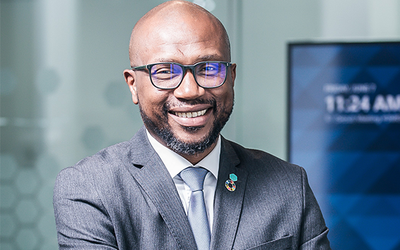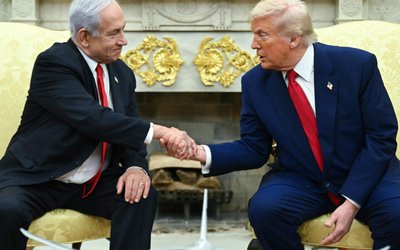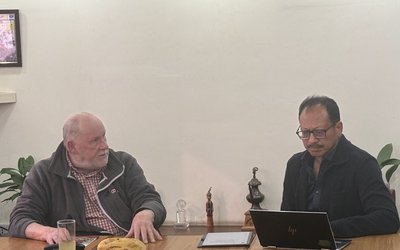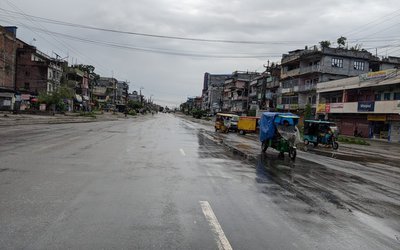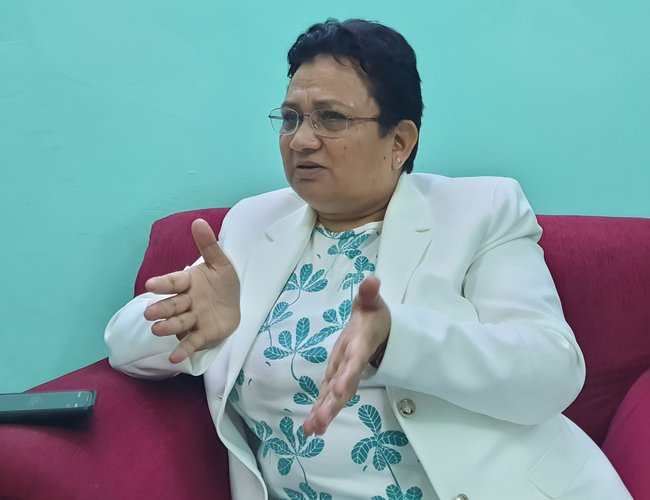
Since you take the portfolio of ministry, you have been stressing the need to replace LPG by electric cooking and petrol based vehicle by electric vehicle. Don’t you think Nepal is in energy transition?
With the Russian invasion of Ukraine, there is a global energy crisis putting pressure on the country like Nepal to search other sources of energy like hydropower. At a time when there is no sign of reducing the prices of petroleum products, we don’t have any options other than to use our hydropower.
How do you see your 14th months of performance as a minister of Energy, Water Resources and Irrigation?
Well, I am sixth minister from Maoist Center in continuity to take the portfolio of Energy Ministry. Once I have appointed as a minister,I started my tenure fixing few agenda for the ministry. Although I am not an energy expert, I kept few things in mind. Firstly, my vision is to use Nepal’s electricity to alleviate poverty. With still over 18 percent of people below the poverty line, energy can help to end the poverty in the country. Despite completing the political revolution, we are yet to make changes in social and economic life. This is the reason a segment of people are critical of political leaders, bureaucrats, entrepreneurs and the business community. Thus, I have decided to make certain contributions to address the issues of people below the poverty line. I have directed NEA to study how much poor people consumeelectricity in a month. Studies have shown that a family below the poverty line consumes 20 units of electricity in a month. I took a decision immediately to provide free electricity to those who use 20 units a month. This decision benefited almost 2.5 million populations, in the one-year period the consumption of electricity has gone up. Now only 1.8 million populationsconsume 20 units.
What decision you have made directing to poverty alleviation?
For poverty alleviation, I have decided to give a subsidy to the electricity used in irrigation. Nepal is basically an agro-based country and large numbers of people are involved in it. Only through increasing the productivity of agriculture, we can uplift the lives of people living below the poverty line. Increasing the production, there requires irrigation. Electricity is a key component of irrigation. Out experiences with earthquakes and Covid-19 have shown that agriculture is a major sector that required constant support from the government. What we have learned is that providing irrigation to the land can change the poverty scenario. By providing irrigation, we can double the current productivity and production. Of course, there also require fertilizers and high-value seeds but there are other ministries looking at them.
What is your slogan in irrigation sector?
Under a slogan of irrigation to arable land, the ministry has been formulating the policies. Currently all national priority irrigation projects are confined to Terai because it contributed immensely to Nepal’s food production. However, mid hill and valleys have also large section of fertile land. If we provide irrigation to those areas, we can double the current level of production there. Increasing production will reduce the imports of food product saving millions of foreign currency and also support poverty alleviation. Only through increasing productivity of agriculture we can stop migration and generate the employment back home.
How about the use of hydro-electricity?
My second priority is to use hydroelectricity as energy to reduce the use of petroleum products. This energy should be consumed internally first. As there are several layers of consumers and tariff, the pricing was based on the consumptions pattern. Those who consumed more electricity, they paid more. Less consumption, less charges, According to economy, more you produce less you pay, less you produce higher price to pay.
How do you fix the prices?
We have eight layers of pricing based on the consumers. I have reduced the prices from Rs.1 to 70 and fifty paisa per unit at the different levels of consumers. For that middle level that used LPG and firewood, I
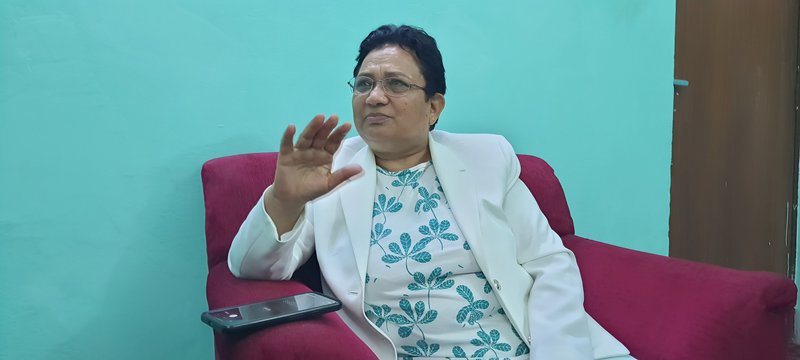
also reduced the prices. In rural parts of Nepal, women have been suffering severe crises caused by the smoke generated from firewood in the kitchen. My other target was to replace LPG using electric cooking. We are importing Rs.60 billion equivalents LPG annually. If we reduce the import of LPG, we can save huge foreign currency. I have reduced the prices of domestic electricity keeping all these issue.
What plan do you have to increase internal consumption?
To increase the internal consumption, I have decided to provide the electricity to the industries as per their demand. I have also demanded charges and prices of electricity used by the farmers run storage, dairy, cold storage and drinking water. In the irrigation, I have reduced the 75 percent tariff. Big surface irrigation projects are alone enough to irrigate large areas of land and we also need groundwater in terai and lift irrigation in mid hills. Cheaper electricity can bring a drastic change in irrigation helping to increasing production. This is the reason I reduced the price it also contributed to displacing the diesel and petroleum pump sets.
What about converting petrol-based transport to electricity?
One of my majortargets is to convert the petrol based transports. We have now 3.2 million vehicles which have been consuming petroleum products worth of Rs.3000 billion annually. Converting the vehicles into electricity can save foreign currency and reduce Nepal’s trade deficit as well. We are encouraging electric vehicles establishing charging stations and providing meters at home. Similarly, we are giving consent to the private parties which want to establish charging stations. We have been providing transformers, electric line. When I joined the ministry, NEA used to provide free Transformers with capacity of 25 kV. I have changed the regulations and now NEA is supplying free transformer up to 100 kV for domestic consumption, industry, cold storage, dairy, irrigation and cooperatives. We have also decided to provide up to 200 kV. My aim is to promote the use of electricity. It makes me happy to know that the use of electricity has increased up to 22 percent at household level. The per-capita of electricity increased from 325 to 351 units.
What about the export of electricity?
Another important work is to start the export of surplus electricity to India. Due to RoR projects, we have a huge surplus of energy in rainy season. Last year, large volume of surplus energy wasted. However, we have started the import of surplus electricity from this year to neighboring India. With the efforts from political, diplomatic and other channel, we were able to convince India to purchase our electricity. This is a major breakthrough.We have started the export from 39 MW last year and 364 MW this year. We have requested India to provide us additional quota for export. This breakthrough was possible during the visit of Prime Minister Sher Bahadur Deuba’s visit to India and his talks with Indian Prime Minister Narendra Modi.
How do you see foreign investment?
In terms of the foreign investment, Nepal has made a big jump. Following the visit of PrimeMinister Sher Bahadur to India, a number of Indian companies have started to invest in Nepal in joint ventures. Satlaj and NEA have already signed agreement to develop Arun IV projects and India’s government company NHRPC has signed agreement to develop West Seti and other project. We have already exported close to Rs.4 billion equivalent electricity to India. This is a major breakthrough
How do you see the use of induction now at household level?
Although it is not our areas to distribute induction, what I can say that the number of household using induction has drastically increased. As NEA has supplying quality and uninterrupted electricity enhancing the distribution system, the number of households has increased. Although some people still demands free induction, it is not NEA to provide it. What our ministry can do is to improve the capacity of distributions centers, establishing infrastructures and supply quality and uninterrupted electricity. Our Ministry has been doing that. The work to provide free induction is the job of Ministry of Supply. In collaboration with different agencies, I have been working to distribute free induction to small marginalized and poor graduate students living in urban areas through the Alternative Energy Promotion Center (AEPC). In other areas, we have been working to distribute the free induction collaborating with local governments. We also have also received certain fund from Green Energy Program to freely distribute 500,000 inductions. We have been working to distribute that induction in this fiscal year.
How easy is to transform use of energy?
It is not easy transforms from one system to others. Despite paying high prices for LPG and LPG stoves, it is a bit difficult to convince the people to switch to electric cooking. People easily pay high prices for LPG. However, they expect free induction to use cheaper electricity. From firewood, kerosene and LPG, now we are heading for clean electric cooking. This is a major revolutionary shift and there need to have broken in the mindset.
What is the significant of export to electricity to India?
First of all beginning of export of big volume of electricity to India has proved wrong and old mindset of those who have been saying that Nepal cannot export its electricity. This is a big achievement. For instances, Nepal has already exported over Rs.4 billion equivalent of surplus electricity to India in just a matter of three months. This is a fact. This will also assure Nepali investors that their investment in the hydropower sector is safe. We will expect to export up to Rs.8 billion. After this, two major India’s state-owned companies Satlaj to Arun IV and Indian government-owned company NHPC Limited developed the 750 MW West Seti and 450 MW Seti River-6 hydroelectricity projects.
How about the supply of electricity in the country and what is the priority export or domestic consumption
Our first priority is to use electricity for the domestic use. We have been taking all kind of effort to increase the domestic consumption. However, we cannot waste or dump the surplus electricity. We are exporting only surplus electricity. We have been making effort to provide electricity to all Nepalese within two years. NEA has already planned for this. If Nepal consumes all the electricity generated in Nepal, there is no question to export. In case of high demand, we may also require to import additional electricity as well. We are selling surplus electricity bringing foreign currency and helping to reduce our trade deficit. This is a positive decision.
How private sector investment contributed to state and local level? For instance, Nepal receives free energy from West Seti, Arun and Arun IV and Upper Karnali, what the state of Nepal has been receiving from IPPs investments except for nominal license fees?
I always admires Nepal’s private sector for their investment in hydropower sector. Independent Power Producers (IPPs) have contributed immensely to turn Nepal from net importer to net exporter. They have also contributed to ending decade-old load-shedding. Except public equity of small amount, people have also invested in large scale in hydropower sector. Banks have invested a large sum of money. This way all the IPP’s projects are also people’s project. We need to thank private sector for all these works. However, all IPP projects are Run-of-the river projects generating huge electricity in wet session and very nominal in winter. I think the time has come for them to invest in storage and picking projects as well. This is the reason NEA has surplus in rainy season and huge deficit in winter.
Given a situation when Indian investors like Satlaj is providing 200 MW of free electricity from Arun III and and NHPC also agree to provide 21.9 percent of free electricity from West Seti, what IPP’s is providing except the license charge?
IPP’s are Nepali investors and they will hand over their entire ownership to Nepal after 30 years. Beside they have helped us saving Nepalese money from importing the electricity. Similarly, IPPs are also paying other royalties to the local governments and issuing share to local people. All these are good sign. I would like to thank them for initiatives.
There is growing concerns over the bad practices of trading Hydropower license. Don’t you think to contain this kind of bag practices of trading hydropower project license?
I would like to thank those who have been generating electricity and constructing the projects. However, there is a bad practice to get the license and trade it to others. The past practice like Kola Ma Jhola (River in the Bag) continues to exist. Out of 6500 MW PPA signed, the companies with the capacity of 1600 MW are yet to start the construction. Had they constructed the projects, Nepal would have exported more electricity to India. I don’t have any complains with private sector investors. However, it is they should fulfill their obligations completing the projects in time and don’t indulge in practices of license trading. There is no such a sector hydropower to provide hundred percent safeties for the investment. As per the Power Purchasing Agreement, NEA pays money once they start generation. Under the take and pay agreement, NEA will pay revenue for the electricity generated by them. IPPs will receive the money for 30 years connecting their power to NEA’s transmission. Whether there is an earthquake, covid-19 and anything else, a hydropower project is like a mulching cow. It is very safe and secure.
How do you see the role of IPPs?
Along with their contributions, they are also benefited a lot from the projects. As per present day calculations, a project return the investment in 10 years, it will provide benefits for another 20 years. As this may be the reasons, frequency of transfer of the project is very high. The license is issued to one company, PPA signs with other and finally construction of company and generation start by third or fourth. You cannot find an investor more than a decade and their movement is fast. This is attractive sector. This is the resources of the state and it should be return to the state in 30 years as it was. The projects reportedly to have over 100 years life. My concerned now is investor should hand over the project for state in running conditions in 30 years.
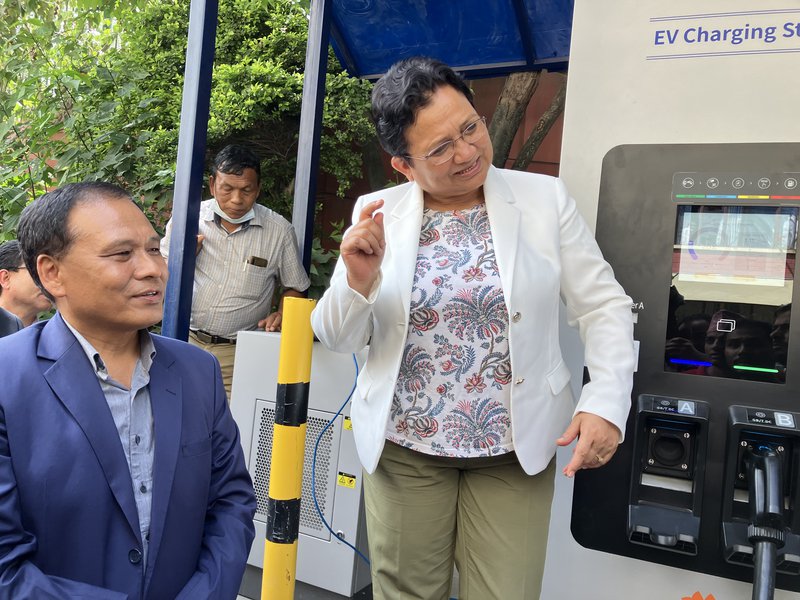
What is the state of negotiations with Asian Development Bank on Dudh Koshi storage and with The World Bank for the upper Arun Project?
Our negotiation with the World Bank on Upper Arun Project is almost final stage. Under the leg of the World Bank, many other international financial institutions will join it. On Nepal’s part, we have to contribute Rs. 60 to 65 billion. We had already organized a meeting of different local investor to generate the investment. Under the led Citizens Investment Board, we had a meeting with all major investor of Nepal including banks, Employment Provident Fund. I am hopeful that the financial closer of Upper Arun will complete within this fiscal year. It will start within two years. So far as Dudhkoshi is concerned, we have negotiating with ADB for financial thing and the project is now in the process of land acquisition. Dudhkoshi is storage project and it is highly important for us. Despite PROR in nature, Upper Arun is also going to be a game changer. Upper Tamakoshi has shown that how important contributions PRORcan make to the country.
As Nepal is pushing electric cooking and electric vehicles, how ministry is working for legislation including regulations and guidelines and local governments?
As federal structures, we always prefer to work in close collaboration with local governments. Whether it is in the electric cooking or electric vehicles, the ministry will involve provincial and local governments in this move. We are now in the process of developing regulations and guidelines. We have already developed some guidelines for charging stations and reduction of the prices to promote electric cooking.
What is the state of Budhigandaki Hydropower projects?
One of the major achievements of my tenure is to finally push the Budhigandaki project in construction phase. Stalled for 20 over the investment issues, finally the government of Nepal has decided to form a Budhi Gandaki Company under Ministry of energy to construct the project. We are final stage of registration of company and it will start soon. Similarly, the process of bringing all the resources collected for the project will be transferred to the company. Close to the load center, this multi-purpose cost of the project will be around Rs.200 billion and it will require annually Rs.35 billion. It will complete in 8 years. As the 400 kV transmission line constructed under MCA Nepal is also close to the project, evacuation of electricity from this project will not be a major issue. The pond of the project is said to be 15 times larger than Phewa Lake.
Since you have been talking about the issue of hydropower projects, the delaying in the completion of transmission line like 400 kV Hetauda-Dhalkebar and Inaruwa project has already delayed for 8 years. How can you solve the problems related to transmission line?
The problem lies on the nature of land ownership. In Nepal land owned by individual due to this they always knock the door of court whenever issue of contributing the land is concerned. The recent verdict deliver by the court on transmission lines like 200 kV Bharatpur-New Butwal and 400 kV Dhalkebar-Inaruwa has paved the way to complete both the projects. 200 kV Bharatpur-Butwal transmission line has already charged and the erection of tower in Siraha has already started. Due to delay in the court, the country has suffered a huge loss of revenue. We are now also pushing the construction of 132 kV transmission line to connect Kohalpur with Surkhet, Butwal Lamahi, Lamahi Chinju. We are also planning to cross border points.
What about energy transition?
We have been talking about the words like zero-emission, clean energy and green energy. Although there are other sources like solar and wind also there, hydropower is major and viable green energy sources of Nepal. I would like to request all international community to support us to develop hydropower projects. Our hydroelectricity is green and clean. For the zero-emission level by 2045, we need to promote hydropower. As Nepal has been paying prices for climate disasters without doing any harm, global community should compensate to Nepal investing in hydropower sector.
How do you have plan for small landholders?
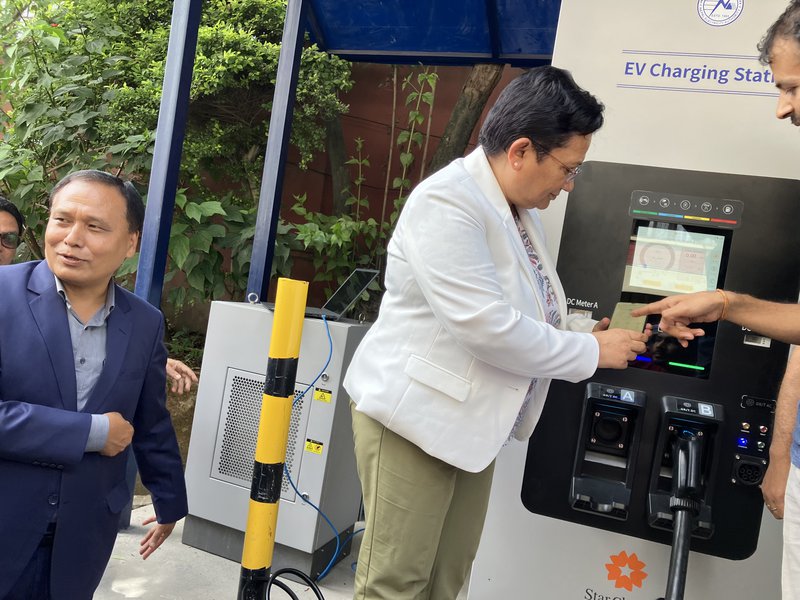
Our policy has clearly identified problems faced by small landholders. In collaboration with local level and international organizations, we are planning to invest resources to build small irrigation projects. As I have already told you that the NEA has already announced up to 75 percent of rebel in the electricity consumed by farmers to live the water.

Keshab Poudel
Poudel is the editor of New Spotlight Magazine.
- ERC Nepal Is Focused On Expanding Distribution And Transmission To The Private Sector: ERC Chair Dr. Dhital
- Jul 06, 2025
- FOURTH PROFESSOR Y.N. KHANAL LECTURE: Nepal-China Relations
- Jun 23, 2025
- Colonel JP CROSS: Centenary Birthday
- Jun 23, 2025
- BEEN: Retrofitted For Green
- May 28, 2025
- GGGI has been promoting green growth in Nepal for a decade: Dr. Malle Fofana
- May 21, 2025


